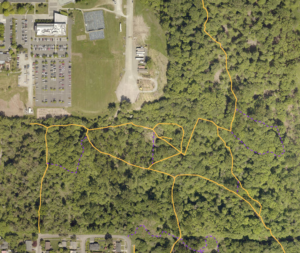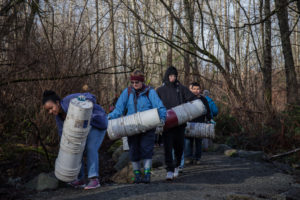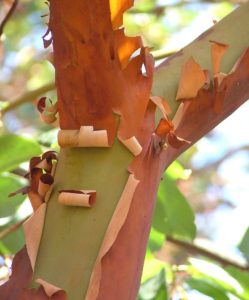Park Profile: Soundway
Life is a lot quieter this spring as Seattle works and shelters at home. One notable exception is public parks and other outdoor spaces, which have for many become a valuable escape from the indoors. This has led public health officials to warn about large parks becoming overcrowded, and in some cases being closed during high-traffic times. With all that in mind, we’re putting together a series of posts on small neighborhood parks that make for scenic getaways and enable you to keep moving!
 Of the many sites we work throughout Delridge and West Seattle, the most storied history probably belongs to Soundway, a site of about 32 acres of forest at the heart of the West Duwamish Greenbelt. In the first half of the 20th century, the site was operated as a sand and gravel mine. On several occasions, there were proposals to develop Soundway for residential housing until one such proposal in 2003 generated substantial opposition from community members and groups, including the nonprofit Nature Consortium (which has since merged into DNDA). This effort, finally, was successful in permanently preserving the site. In 2011, Soundway officially became a Seattle city park. A more detailed history is maintained by the community group West Duwamish Greenbelt Trails.
Of the many sites we work throughout Delridge and West Seattle, the most storied history probably belongs to Soundway, a site of about 32 acres of forest at the heart of the West Duwamish Greenbelt. In the first half of the 20th century, the site was operated as a sand and gravel mine. On several occasions, there were proposals to develop Soundway for residential housing until one such proposal in 2003 generated substantial opposition from community members and groups, including the nonprofit Nature Consortium (which has since merged into DNDA). This effort, finally, was successful in permanently preserving the site. In 2011, Soundway officially became a Seattle city park. A more detailed history is maintained by the community group West Duwamish Greenbelt Trails.
The official if somewhat indirect park entrance is located at the intersection of 14th Ave SW and SW Holly Street. This trailhead is in a residential neighborhood, so please park courteously! The trail begins at the southwest corner of Soundway and proceeds north, eventually intersecting with the rest of the trail network.

The third option for accessing Soundway and its neighboring parks is from an easily-overlooked trailhead on the north side of Highland Park Way near the intersection with West Marginal Way. There is an information kiosk here and parking space for a couple vehicles.
Whichever option you choose, you will experience during your walk in a transition from the highest-quality, “healthiest” native forests into those that are still in more active restoration and maintenance. The Green Seattle Partnership uses a four-phase approach to restoration, with admission to Phase 4 happening only when certain thresholds are met of native cover, weed presence and healthy regeneration.
As of this writing, about two-thirds of Soundway has made it to Phase 4. Most of the remaining acreage is in Phase 3, which means it still requires more active restoration work to control invasive plant populations and install native tree species. As our volunteer program is currently suspended, this work will be accomplished by staff.
For any tree enthusiasts out there, Soundway is on an ever-shrinking list of parks that hosts a population of large Pacific madrone (Arbutus menziesii) trees. An iconic and visually stunning tree that is easily recognized by its peeling, papery bark, madrones have been on the decline throughout the region for some time and are difficult to propagate. A dedicated effort is in progress to understand and hopefully reverse the declines. Within Soundway, they are most easily found along the south border, but smaller, younger specimens can be seen near the trail at the center of the site. Check them out!
A full tour of the trails within Soundway would add up to 1 to 2 miles of walking. If you’re hoping for a lengthier hike, the trails connect seamlessly to other parks within the West Duwamish Greenbelt. Heading south will take you through the forests of Riverview or to the baseball fields of Riverview Playfield. The trail to the north connects to Puget Park, which offers both forests and a wetland where DNDA’s Nature program has conducted amphibian monitoring for Woodland Park Zoo.
We hope you found this little walkthrough informative and perhaps an enticement to get out of the house. Next month, we plan to visit a site in the Longfellow Creek watershed called Brandon Street Natural Area – let us know if there’s anything else you would like to learn!


